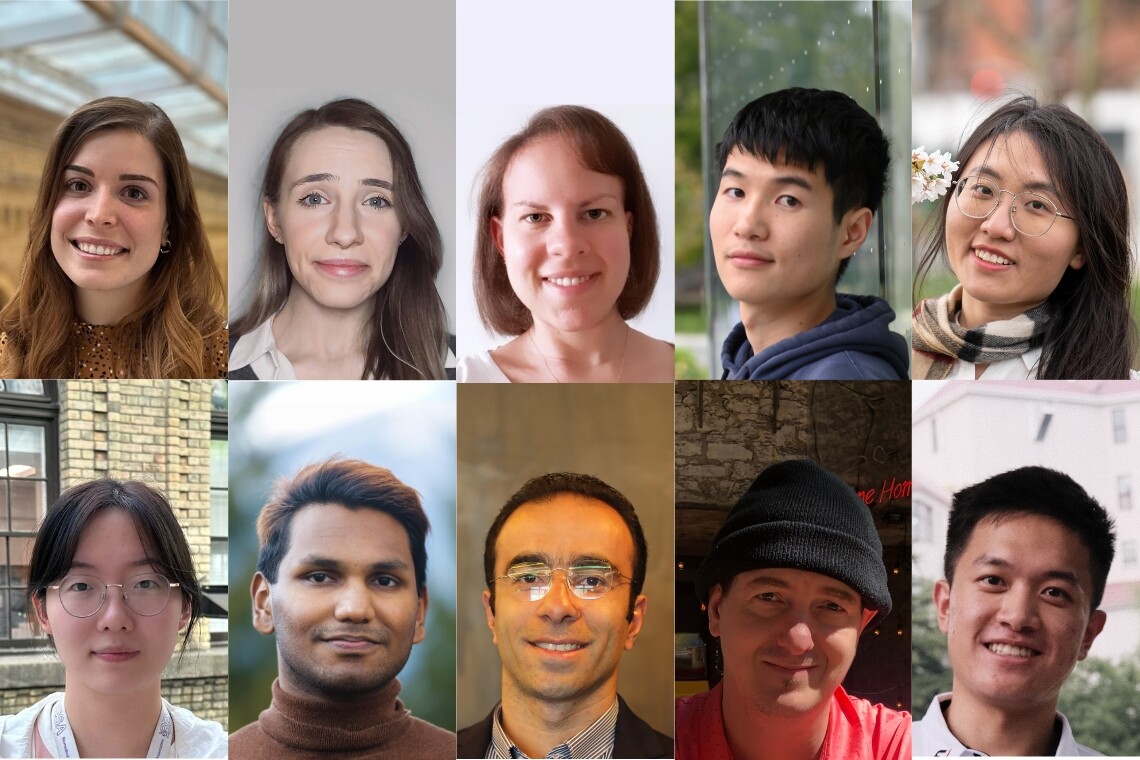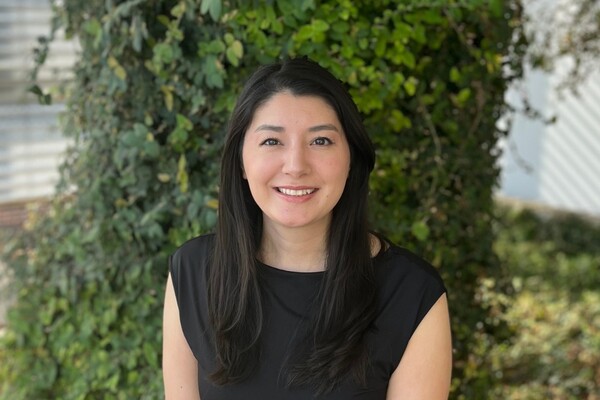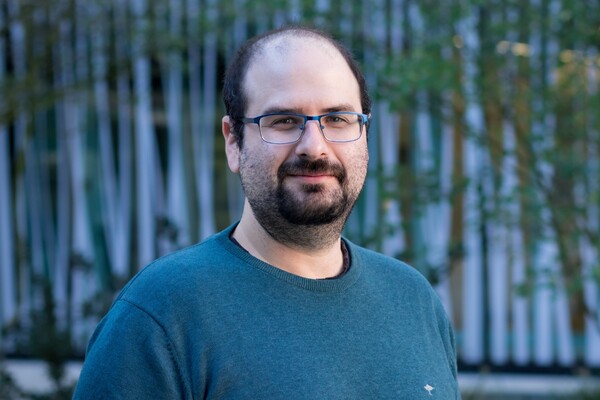Main Second Level Navigation
2024 Yip Award recognizes graduate students investigating drug delivery, gene regulation, cellular interactions and imaging techniques

The Donnelly Centre for Cellular and Biomolecular Research recognizes outstanding new graduate students each year with the Cecil Yip Doctoral Research Award.
The award provides financial support to first-year doctoral-stream students. It was established by the family of the late Cecil Yip, who was former Vice-Dean of Research in the Faculty of Medicine and a co-founder of the Donnelly Centre.
The 2024 recipients of Cecil Yip Doctoral Research Award are:
- Noor El-Huda Bahsoun
- Mel Davie
- Juliana de Andrade Bolsoni
- Zhenfeng Deng
- Wenjia Hao
- Mingyang Liang
- Umayeer Milky
- Hadi Tabarraei
- Joel Wingrove
- Cheng Xing
“On behalf of the Yip Doctoral Award committee, I congratulate this year’s recipients,” said Christopher Yip, Dean of the Faculty of Applied Science and Engineering, chair of the Cecil Yip Doctoral Research Award selection committee and son of Cecil Yip. “Our 2024 recipients represent the diverse range of biomedical research areas that are being tackled at the Donnelly Centre. I believe this new generation of scientific leaders will uphold the Donnelly Centre’s innovative and collaborative spirit in their efforts to help solve the biggest challenges in health and medicine.”
Targeted immunomodulation for neuroprotection in glaucoma
Noor El-Huda Bahsoun is conducting research under the supervision of Molly Shoichet, university professor of chemical engineering and applied chemistry. Bahsoun is developing a novel tool that integrates affinity peptides within hydrogels for the immunomodulation of tumor necrosis factor alpha (TNF-α). TNF-α is activated in the retina during inflammation or injury, where it can either facilitate tissue protection and repair or contribute to retinal degeneration through excessive inflammation, depending on its concentration. This is particularly evident in glaucoma, where elevated TNF-α levels damage retinal ganglion cells, ultimately leading to blindness. The hydrogel will be engineered with peptide binding partners that regulate TNF-α concentrations by either releasing TNF-α antibodies or sequestering excess TNF-α. By integrating these affinity peptides, Bahsoun aims to maintain balanced TNF-α levels to provide essential neuroprotection to retinal ganglion cells.
Improving data analysis for studying species divergence
Mel Davie is conducting research under the supervision of Jesse Gillis, associate professor of physiology. Davie is developing a method to corroborate evidence of divergence in gene activity between different species and address technical limitations in cross-species analysis of single-cell RNA sequencing data. The new analysis method will combine the benefits of single-cell and bulk data to enhance our ability to predict regulatory divergence between species and improve our understanding of evolutionary biology. Davie will use primate brain cell data produced by the BRAIN Initiative Cell Atlas Network for her research.
Mapping cellular interactions influencing cystic fibrosis
Juliana de Andrade Bolsoni is conducting research under the supervision of Igor Stagljar, professor of biochemistry. de Andrade Bolsoni is developing a comprehensive map of the interactions between solute carrier proteins and the cystic fibrosis transmembrane conductance regulator (CFTR), which plays a role in cystic fibrosis and metabolic disorders. CFTR is a channel responsible for transporting ions across epithelial membranes and solute carrier proteins are responsible for maintaining balance of a wide range of molecules within the cell. Disorders associated with CFTR can result from dysregulation of the interactions between CFTR and solute carrier proteins. de Andrade Bolsoni aims to improve our understanding of their relationship to each other to explore potential avenues for therapeutic treatment of cystic fibrosis.
Indexing the global virome
Zhenfeng Deng is conducting research under the supervision of Artem Babaian, assistant professor of molecular genetics. Deng is constructing an efficient method to discover viral segments and infer their functional and evolutional relationships with high sensitivity and throughput. By combining the Babaian lab’s infrastructure in ultra-large sequencing screening with the latest bio-language models and structure alignments, Zhenfeng is working towards building an encyclopedia on viruses hidden in public datasets and not previously described. His research will contribute efforts to develop the world’s most comprehensive virus discovery database.
Investigating mechanisms of nuclear receptor dimerization for drug development
Wenjia Hao is conducting research under the supervision of Henry Krause, professor of molecular genetics. Hao is studying the mechanisms of nuclear receptor dimerization, and the effects of ligand binding on this process. Nuclear receptors are transcriptional factors that regulate gene expression upon sensing endogenous and exogenous signals. Most nuclear receptors function by binding to signal molecules called ligands, forming dimers before binding to DNA sequences. Hao aims to improve our understanding of the role of ligand binding in regulating the nuclear receptors' dimerization, and thus influencing the cell’s response to internal and external conditions. Her research will provide insights into the functions of nuclear receptors that are key drug targets for many physiological processes.
Innovating imaging techniques to study glycoproteins
Mingyang Liang is conducting research under the supervision of Christoper Yip, professor of biochemistry and biomedical engineering. Liang is studying CEACAMs – a family of cell surface glycoproteins involved in intercellular interactions – at the single-cell and tissue level using innovative super-resolution imaging techniques. CEACAMs play an integral role in many cellular processes, including growth and differentiation into different cell types, as well as inflammation and tumour development. Liang aims to expand our understanding of how the biological function of this family of proteins is influenced by its self-association states using state-of-the-art imaging techniques.
Elucidating the role of an enzyme family on DNA replication
Umayeer Milky is currently conducting research under the supervision of Grant Brown, professor of biochemistry. Milky's research focuses on identifying the roles of the APOBEC3 (A3) family in regulating DNA replication. These enzymes have been studied extensively for their functions in the immune system, where they edit DNA and RNA from viruses and retroelements. The ability of these enzymes to induce mutations is significant in the context of cancer, as A3-mediated mutagenesis can contribute to tumor development, genomic instability and resistance to cancer treatment. Milky's goal is to explore the role of the enzyme family in DNA replication to find new targets for cancer treatment.
Identifying pioneer transcription factors influencing gene regulation
Hadi Tabarraei is conducting research under the supervision of Timothy Hughes, professor of molecular genetics. Tabarraei is expanding the collective database of pioneer transcription factors, which have a unique ability to bind to closed chromatin and changes chromatin states. His research focuses on exploring the interactions between transcription factors and histones that shape the chromatin landscape and regulate gene expression. With only a limited number of known pioneer transcription factors, Tabarraei aims to discover new pioneer factors that could significantly impact our understanding of chromatin dynamics and the regulation of transcription.
Exploring the specificity of RNA binding proteins
Joel Wingrove is conducting research under the supervision of Timothy Hughes, professor of molecular genetics. Wingrove is developing a system that integrates biochemistry and computational analysis to map the binding specificity of RNA binding proteins. He will test around 20 known binding proteins to confirm the accuracy of his assay and document the binding preferences of uncharacterized RNA binding proteins. This research aims to unravel the key-and-lock relationship between RNA binding proteins and RNA that underlies post-transcriptional gene regulation and disease.
Improving high-resolution microscopy to study liver disease
Cheng Xing is conducting research under the supervision of Gary Bader, professor of molecular genetics. Xing is optimizing Volume Electron Microscopy (vEM) through deep learning models to study human liver tissue structure at the cellular and subcellular level. This type of microscopy enables imaging of 3D structures at the nanoscale. Xing’s research entails designing models to improve current vEM techniques, creating a 3D map of the liver and automating the imaging process. His research will help determine the relationship between cell components and structure to liver disease, improving our understanding of liver biology and setting new standards for high-resolution organ study.
News



